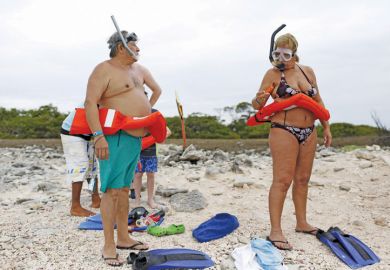Historians of the civil rights movement in the United States have largely ignored the role of local activists in the American south. Its history has been written as if a few charismatic leaders single-handedly inspired the movement in the 1960s. But archival materials and oral histories of these local activists demonstrate that the national movement and its leadership did not arise in a vacuum. In addition to educated male ministers as commonly portrayed, the leadership contained a very large number of rural working-class blacks.
By the time of the "freedom summer" of 1963, when white college youth joined the movement, networks had already been developed by local communities. Inequalities in the American north, which resulted from both entrenched and subtle racism, were very different from the situation in the south where there were basic issues of voter registration. In 1960 fewer than 2 per cent of Mississippi blacks had been registered to vote, but from the summer of 1962 young organisers went to remote towns as representatives of the Student Non-violent Coordinating Committee (SNCC), and changed this situation. Much of their work has gone largely unacknowledged, its ethos being deeply rooted in the egalitarianism of the southern black folk culture and thus invisible to most academics and the media.
These two books by Charles Payne and Adam Fairclough describe the development of such institutional self-consciousness at the local, state and national levels among the black community. One of the neglected institutions of black people in the American south was an elaborate ritual of courtesy which was construed instead as servility. Courtesy enabled an oppressed people to treat each other with the self-respect that was otherwise denied to them; it reiterated at a profound level the democratic tradition of entitlement to regard.
Accounts of the grassroots, with national movements seen from the bottom-up rather than the top-down, highlight the connections between the local and the national, the socio-economic and the political. Payne's study focuses on Greenwood, Mississippi and complements the work of Robert Norrell (Reaping the Whirlwind, 1985) on Tuskegee, William Chafe (Civilities and Civil Liberties, 1980) on Greensboro, and David Colburns (Racial Change and Community Crises, 1985) on St Augustine. Yet the combined impact of these local studies on the history of the civil rights movement remains largely unexamined.
The movement also contained large numbers of women from its beginnings in the 1930s. The recent election of Myrke Evers-Williams as the chairperson of the National Association for the Advancement of Colored People continues this long tradition. Rosa Parks was active in the NAACP from 1943 and attended Ella Baker's leadership training conference in Tennessee in 1955. Parks, Baker and Septima Clark, active leaders, encouraged voter registration, literacy campaigns and economic co-operation. These activities provided the foundation for the sit-ins and protest marches of later years. The skills and confidence of these women enabled the establishment of citizenship schools, rather than reliance on strong leaders, who were seen as media creations. These men and women were non-bureaucratic in their modes of functioning. They focused on local problems and were sensitive to rural customs and social structure; and they belonged to families with traditions of social involvement and defiance. The demoralisation of the movement was partly a result of its shifting away from such leaders as the focus of racism shifted away from the rural south to the urban north. Martin Luther King and those in the southern struggle were unable to cope with the urban uprisings in the north because they represented a totally different set of issues.
Payne is opposed to a history which is homogenised and written from an intellectually elitist perspective. The fact that history is made by everyday people who did the spade work is acknowledged in his book, which is its chief importance.
Both Payne and Fairclough deal with racism as a complex phenomenon and not simply as a matter of attitude. The southern whites are not shown as stupid, vulgar and one-dimensional racists, but as part of the southern white social structure. Fairclough's book is balanced and well-written: Martin Luther King emerges as politically astute because he and the southern movement used morally based principles of non-violence to raise profound issues about the failures of secularism. The role of the independent black churches and some of their leaders in mobilising ordinary people to achieve extraordinary political feats turned out to be a matter of real and enduring significance.
Jagdish Gundara is head of the Centre for Multicultural Education, Institute of Education, University of London.
Martin Luther King, Jr
Author - Adam Fairclough
ISBN - 0 8203 1690 3 and 1653 9
Publisher - University of Georgia Press
Price - $25.00 and $9.95
Pages - 163
Register to continue
Why register?
- Registration is free and only takes a moment
- Once registered, you can read 3 articles a month
- Sign up for our newsletter
Subscribe
Or subscribe for unlimited access to:
- Unlimited access to news, views, insights & reviews
- Digital editions
- Digital access to THE’s university and college rankings analysis
Already registered or a current subscriber?



